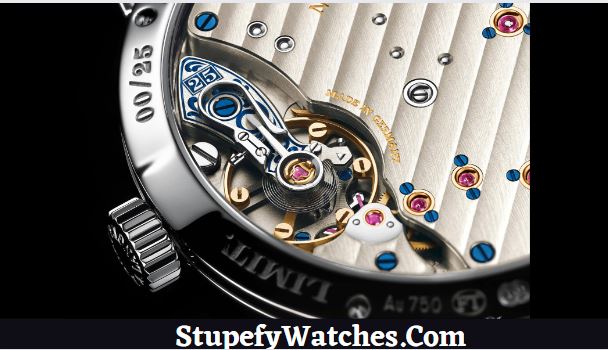In watchmaking, the frequency of the movement is a real marketing asset. Many brands are in a race to increase the oscillation speed and performance of their watches. But what really is this famous frequency of an automatic watch?
Page Contents
Frequency explained

This frequency can be expressed in hertz (Hz) or in alternation per hour (A/h).
The most common frequency for modern mechanical wristwatch movements is 4 Hz or 28,800 vibrations per hour. A timepiece running at 4 Hz makes 4 oscillations per second or 8 half oscillations per second. Knowing that there are 60 seconds in a minute, this gives 480 half-oscillations (or vibrations) per minute. If we multiply the 480 vibrations per minute by the 60 minutes of an hour, we obtain the figure of 28,800 vibrations per hour. Thus, a chronograph of a watch with 28,800 vibrations per second can time an event to 1/8 of a second.
For example:
- Frequency of 2.5 Hertz = 18,000 vibrations per hour (A/h)
- Frequency of 3 Hertz = 21,600 vibrations per hour (A/h)
- Frequency of 4 Hertz = 28,800 vibrations per hour (A/h)
- Frequency of 5 Hertz = 36,000 vibrations per hour (A/h)
The figures obviously don’t stop there and go much higher. The proof is with quartz watches, the majority of which have a frequency of 32 MHz.
How to fix Bluetooth connection problems In Casio G-Shock?
Advantages and limitations of frequency of an automatic watch
However, you should know that a very high frequency will consume more energy, lead to a loss of power reserve autonomy, and more mechanical problems.
In addition, this requires a smaller balance wheel. It will therefore be more sensitive to disturbances that the movement of the watch may suffer, while a larger and heavier balance wheel will be more able to cope with possible shocks.
Is higher frequency in watch better?
A higher frequency in a watch is generally considered better for several reasons, but it’s not the only factor that determines a watch’s overall quality or performance.
Higher-frequency movements can consume more energy, potentially leading to a shorter power reserve. The choice of frequency should be in line with the intended use and function of the watch.
Are lower frequencies more powerful?
lower frequencies in watch movements are typically more energy-efficient, which can result in a longer power reserve.
However, higher frequencies are favored for their improved accuracy and smooth second-hand motion, but they often come at the cost of reduced power reserve. The choice between lower or higher frequency depends on the specific design and intended use of the watch.
Solutions for fogged glass on Casio watches
Conclusion
In summary, the frequency of an automatic watch is the rate at which the balance wheel oscillates, and it is a factor that can influence the watch’s timekeeping accuracy.
You may read our guide on How to clean your watch in a simple and effective way?
